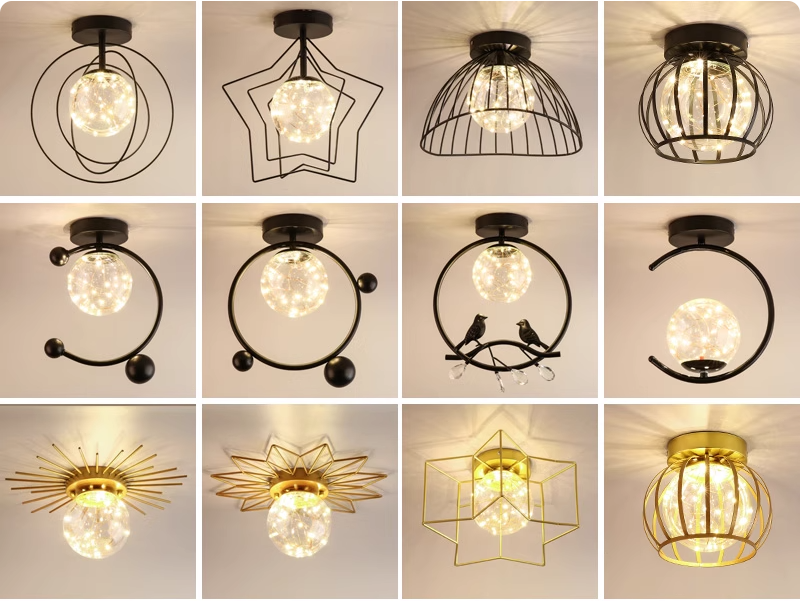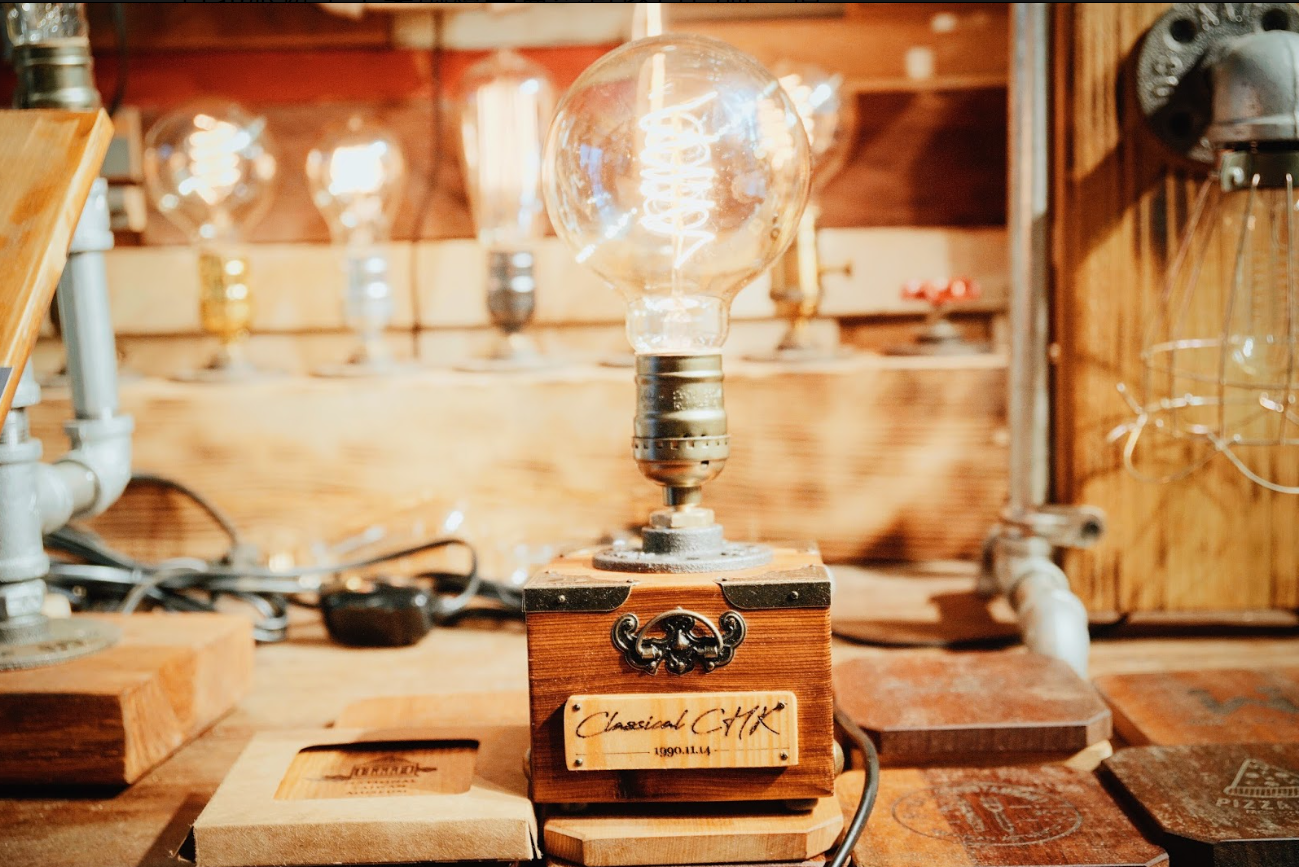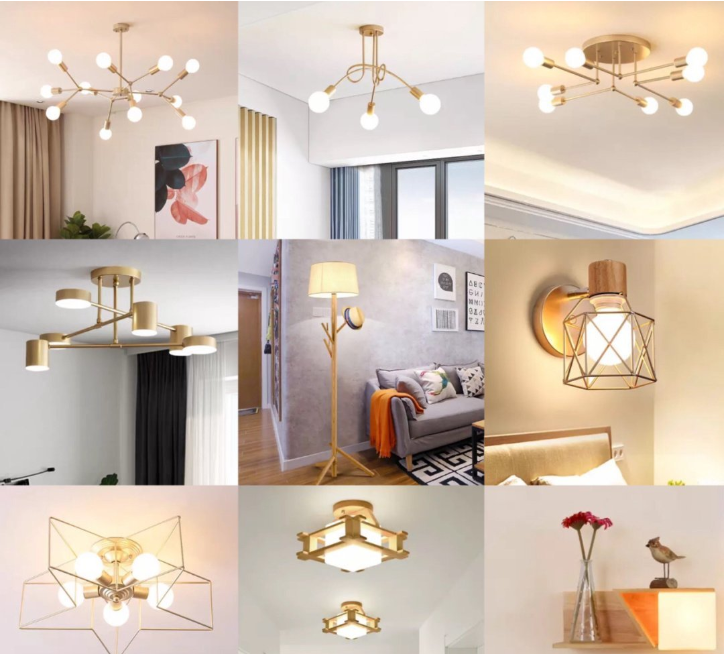Lighting plays a crucial role in home design—it enhances aesthetics, sets the mood, and ensures practicality. However, selecting the perfect lighting fixtures can be challenging. Here’s a guide to help you choose pieces that are both visually appealing and highly functional.
Consider the Room’s Purpose

Different spaces require different lighting solutions. For example:Living Room: Opt for layered lighting—combine ambient (ceiling lights), task (floor lamps), and accent (wall sconces) lighting.
Kitchen: Prioritize bright, focused lighting under cabinets and over countertops for food prep.
Bedroom: Soft, warm lighting with dimmable options creates a relaxing atmosphere.
Choose Energy-Efficient Options
LED bulbs last longer and consume less energy than incandescent or halogen bulbs. Look for ENERGY STAR-rated fixtures.
6. Don’t Forget Installation & Maintenance
Ensure the fixture is easy to install (or hire an electrician if needed).
Pick materials that are easy to clean (e.g., glass, metal over intricate fabric shades).
Test Before Buying (If Possible)
Balance Style and Function
Modern & Minimalist: Sleek LED fixtures provide clean lines and energy efficiency.
Rustic & Industrial: Pendant lights with metal or wood finishes add character while offering ample illumination.
Classic & Elegant: Chandeliers with dimmable bulbs enhance sophistication without sacrificing brightness.
Choose the Right Bulb
Warm White (2700K-3000K): Ideal for living rooms and bedrooms.
Cool White (3500K-4100K): Best for kitchens and workspaces.
Dimmable LEDs: Offer flexibility in adjusting light intensity.
Pay Attention to Scale & Placement
A large chandelier suits high ceilings, while smaller pendants work well over kitchen islands.
Ensure fixtures don’t obstruct movement or sightlines in the room.

Smart Lighting for Convenience
Smart bulbs and fixtures (like Philips Hue or Lutron) allow remote control, scheduling, and color adjustments—perfect for modern, tech-savvy homes.
Final Tip: Test Before You Buy
If possible, see the fixture in person or check reviews to ensure it delivers both style and performance.
By considering design, functionality, and technology, you can find lighting that elevates your space while serving everyday needs.
Determine the Purpose
Ambient Lighting: Provides overall illumination (e.g., chandeliers, recessed lights).
Task Lighting: Focused light for activities (e.g., desk lamps, under-cabinet lights).
Accent Lighting: Highlights decor (e.g., wall sconces, track lights).
Match the Style to Your Decor
Modern/Contemporary: Sleek designs with metallic or matte finishes (e.g., geometric pendants).
Traditional: Classic shapes like crystal chandeliers or brass fixtures.
Industrial: Exposed bulbs, metal cages, and rustic finishes.
Minimalist: Simple, clean lines with neutral colors.
Consider the Right Brightness & Color Temperature
Warm White (2700K-3000K): Cozy and inviting (ideal for living rooms and bedrooms).
Cool White (3500K-4100K): Energizing (great for kitchens and offices).
Daylight (5000K-6500K): Bright and crisp (best for task lighting).
Use dimmable bulbs for adjustable ambiance.
Choose the Right Size & Placement
Dining Room: A chandelier should be ½ to ⅔ the table’s width and hang 30-36 inches above the table.
Living Room: Layer lighting with floor lamps, table lamps, and overhead fixtures.
Bedroom: Soft, warm lighting with bedside lamps or wall-mounted lights.
Opt for Energy Efficiency
LED bulbs last longer and consume less energy than incandescent or CFL bulbs.
Look for Energy Star-certified fixtures for better efficiency.
Don’t Forget Practicality

Easy-to-clean materials (e.g., glass, metal) for high-maintenance areas.
Adjustable fixtures (e.g., swing-arm wall lights, adjustable track lighting).
Smart lighting (e.g., voice-controlled or app-controlled bulbs) for convenience.
Determine the Purpose
Before shopping, identify the primary function of the light:
Ambient Lighting: Provides overall illumination (e.g., chandeliers, ceiling lights).
Task Lighting: Focused light for activities (e.g., desk lamps, under-cabinet lights).
Accent Lighting: Highlights decor (e.g., wall sconces, track lighting).
Consider the Room’s Style
Match the fixture to your interior design:
Modern/Contemporary: Sleek, geometric shapes (e.g., LED pendant lights).
Traditional: Classic designs (e.g., crystal chandeliers).
Industrial: Exposed bulbs, metal finishes (e.g., Edison bulbs).
Minimalist: Simple, unobtrusive fixtures (e.g., recessed lighting).
Choose the Right Size & Scale
Large Rooms: A statement piece (e.g., a bold chandelier) can anchor the space.
Small Rooms: Opt for compact or multi-functional lights (e.g., wall-mounted lamps).
Dining Table: The fixture should be 1/2 to 2/3 the table’s width.
Prioritize Functionality
Adjustable Brightness: Dimmable lights offer flexibility.
Energy Efficiency: LED bulbs save power and last longer.
Proper Placement: Avoid glare in workspaces; use warm light in bedrooms.
Pay Attention to Color Temperature
Warm White (2700K-3000K): Cozy, ideal for living rooms & bedrooms.
Cool White (3500K-4100K): Bright & energizing, great for kitchens & offices.
Daylight (5000K-6500K): Best for task lighting.
Don’t Forget Maintenance
Dust-prone designs (e.g., intricate chandeliers) require regular cleaning.
Easy-to-reach fixtures are better for high ceilings.
Match the Style to Your Decor
Choose a fixture that complements your interior design:
Modern/Contemporary – Clean lines, metallic finishes (e.g., LED pendant lights).
Rustic/Farmhouse – Wooden or wrought-iron fixtures with warm tones.
Industrial – Exposed bulbs, black metal frames.
Minimalist – Sleek, simple designs with neutral colors.
Final Tip: Layer Your Lighting
Combine ambient, task, and accent lighting for a balanced and stylish effect.
By considering both aesthetics and practicality, you can create a well-lit, inviting space that suits your needs and enhances your home’s design.



